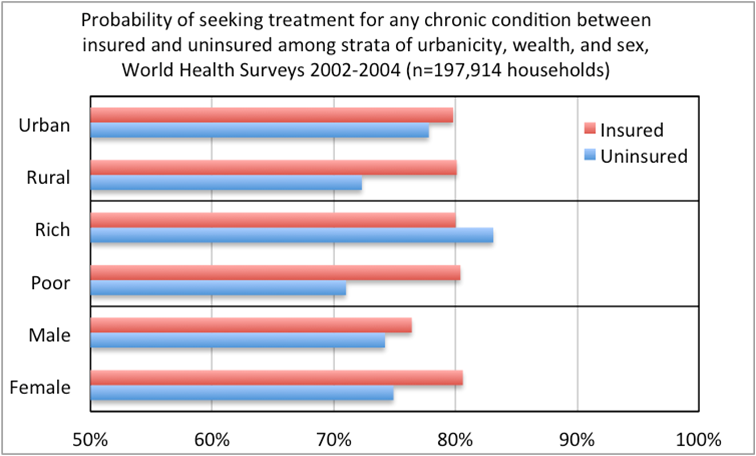Non-communicable diseases (NCDs) are the greatest contributor to morbidity and mortality in low- and middle-income countries, and these diseases are disproportionately experienced by those in the most disadvantaged circumstances. In line with initiatives to “close the gap” on several health indicators between low- and high-income countries as well as between the poor and wealthy within those countries, NCD management is becoming the central focus of health system development worldwide, including providing health insurance in regions where it is not yet commonplace.
A new paper in Health Policy by Abdulrahman El-Sayed, Anton Palma, Lynn Freedman and Margaret Kruk, examines the contribution of health insurance to individuals seeking care for their chronic illnesses. Using population-representative data from households in 48 low- and middle-income countries from World Health Surveys conducted by the World Health Organization in 2002-2004 (n=197,914), they find that those with health insurance are more likely to seek treatment for their chronic illnesses. Having insurance was associated with reduced disparities in treatment seeking behavior between the wealthy and poor, and between urban and rural residents in these settings. Insurance was also associated with greater likelihood for seeking treatment among women than men. Their findings also showed that those with health insurance were less likely to have paid out-of-pocket to seek health care for their chronic illnesses.
This observed gap reduction in health care uptake between historically disparate groups is promising for advocates of universal health coverage, especially in low-income settings. Proponents of universal health care argue that a prime mechanism for these disparities is that access to health care, which is already limited by sparse health facilities and human resources, is rendered inaccessible when people suffer financial hardships in order to pay for them. Thus, private health insurance programs, which rely on direct payments by the insured, may be unaffordable by the poor and not be a viable option in these settings.


